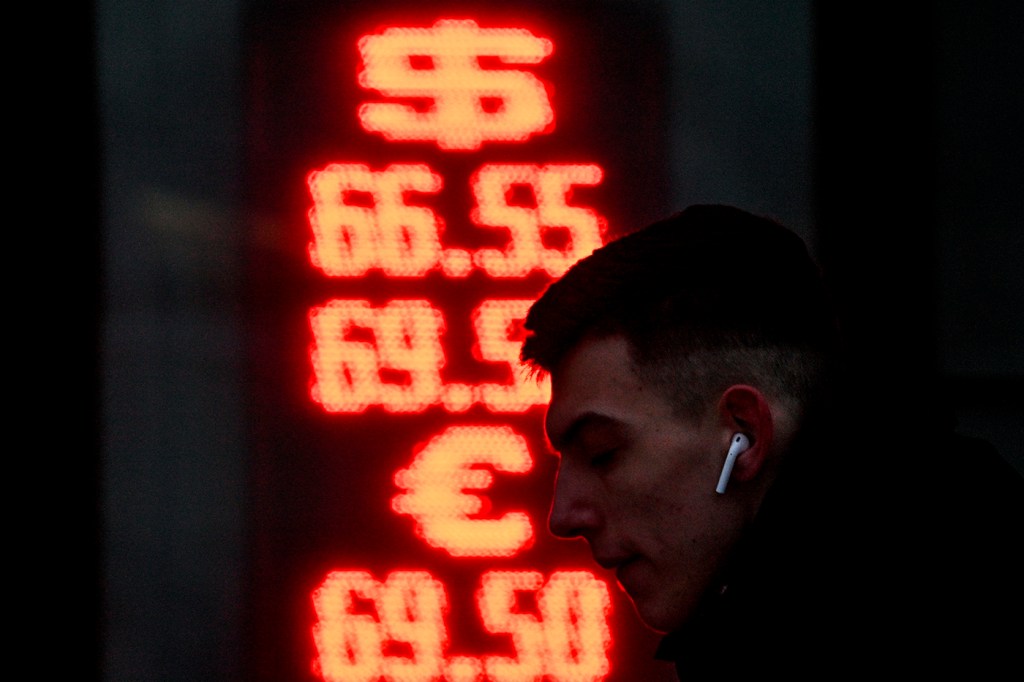What will the US economy look like in 2023?

What will the U.S. economy of 2023 look like?
It’s the question on everyone’s mind, especially after years of hardship brought on by the COVID-19 pandemic, inflation and supply chain disruptions that’s dovetailed into lingering uncertainty over the direction of the economy.
Whether a bona fide recession is in the cards for 2023, the period of “slow growth” outlined by the Federal Reserve could just as well presage further economic stagnation and job loss that characterizes recessionary periods.
“In fact, there really isn’t much of a difference between a mild recession and a period of slow growth,” says Robert Triest, chair and professor of economics at Northeastern.
Under either scenario, Triest says there will be an increase in the unemployment rate in 2023. The Federal Reserve’s forecast sees unemployment rising to 4.6% by the end of the new year—a little less than one percentage point higher than it is today.
The central bankers’ calculus also includes continued interest rate hikes throughout the course of 2023 despite signs of an easing rate of inflation, which was 7.1% in November, down from a high in 2022 of 9.1% in June. Banking authorities have tried to slow inflation and manage expectations to prevent high prices from sticking in certain categories, such as in housing with rents, and in the medical sector.
“Despite elevated inflation, longer term inflation expectations appear to remain well-anchored,” Federal Reserve Chair Jerome Powell said in December after the central bank raised borrowing rates half a percentage point to its highest level in 15 years. “The longer the current bout of high inflation continues, the greater the chance that expectations of higher inflation will become entrenched.”
As has been the story for much of 2022, the economic data has experts divided over the true causes of inflation; how or when the Federal Reserve should act to curb it; and whether the present low unemployment is good for an economy on the brink of a potentially painful downturn.
“We’re flying blind to a very large degree,” says William Dickens, university distinguished professor of economics and social policy at Northeastern.
“We have inflation, but we have some very unusual economic circumstances that are at least partly responsible for that inflation,” Dickens says.
What’s so unusual, Dickens says, is the phenomenon of supply shocks meeting an overstimulated economy. It all began earlier in the COVID-19 pandemic, when the Biden administration and the Federal Reserve acted to stabilize an economy that had been turned upside down by the spread of infection.
The combination of Biden’s fiscal stimulus package and the actions taken by the central bank increased demand for all sorts of consumption goods, which in turn led to an increase in the demand for labor. Despite significant job losses during early phases of the pandemic, the labor market rebounded; but the economy was still too hot, leading directly to rising prices, many argued.
“Normally we think of just having to deal with a supply shock, which we’ve had plenty of over the last few years between COVID-19, Russia’s [war in Ukraine], with the food and energy crisis, and so on,” Dickens says. “On the other hand, we’ve also seen overstimulated economies before—ones where the unemployment rate gets so low that employers are having a hard time finding workers so they start jacking up wages, which is another source of inflation.”
Dickens says that, taking either supply disruptions or the artificial heating of the economy in a vacuum, economists can point to specific causes, decipher the data and fairly accurately predict what’s going to happen next. That’s not all the situation they face today.
“The problem with having both of them at the same time is that everyone is trying to figure out how much of what we’re seeing in terms of inflation is a result of what’s going on in the labor market, and how much of it is due to supply chain problems, and food and energy price increases that are a result of external factors,” Dickens says.
Predicting what happens next, he says, depends on where economists “come down on the relative importance of those two” ideas.
“At one extreme, you have people who think that 3.5% unemployment is probably as low as you can go, but in itself is not necessarily a problem, pointing to the fact that wages haven’t kept up with productivity for some time now and therefore workers are due for wage increases,” Dickens says.
At the other end of the spectrum, “you have people who say, well the supply chain problems are almost gone, and the food price and energy price increases were” transitory in nature.
“To them, it’s all about bringing the unemployment rate up and getting it back up to 4 or 5%, depending on which flavor of economist they are,” Dickens says.
At the end of the day, no one has a crystal ball. What most economists know at this point is that it’ll be months before the effects of the Fed’s rate hikes are observable, says Nancy Kimelman, assistant teaching professor in economics at Northeastern.
“The fact is, monetary policy is not something where you make a decision today and you see the effects tomorrow,” Kimelman says. “It’s going to be a while … before we see the positive or negative effects of [December’s] interest rate hikes.”
Kimelman maintains that the Fed should have acted sooner to cool the economy during the COVID-19 pandemic. She says 2022 “has been the year the Fed has tried to play catchup.”
“They should have raised rates much earlier,” she adds.
For media inquiries, please contact media@northeastern.edu.






